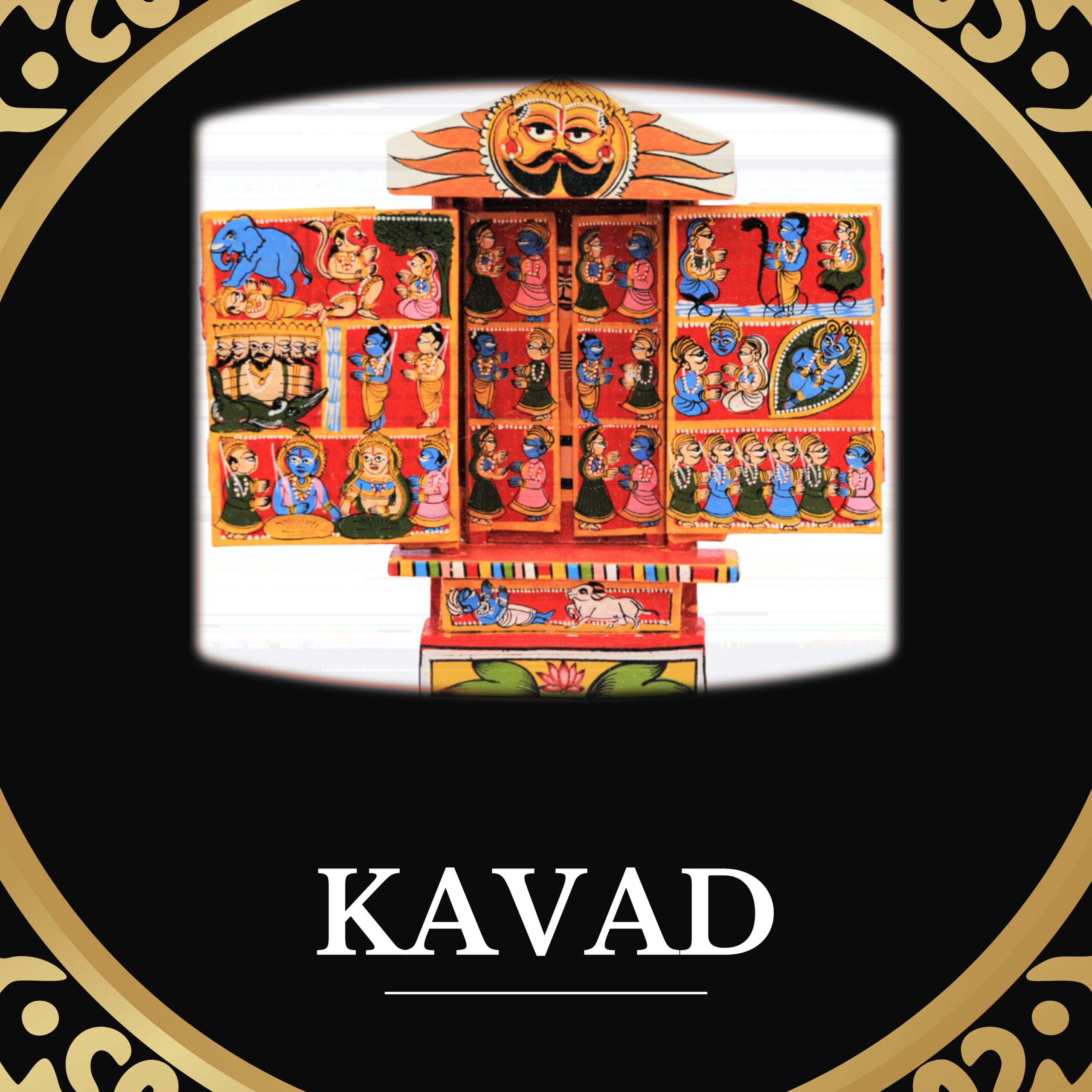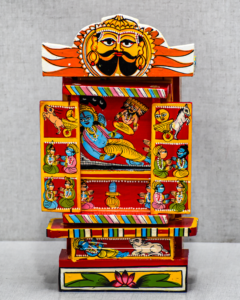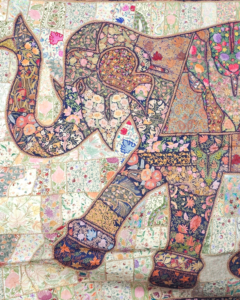The Kavad Art of Rajasthan is a unique form of storytelling that originated in the village of Bassi, in the Chittorgarh district of the state. The art form dates back to at least 400 years ago, and is believed to have been started by the Kumawats, an artisan caste.
The Kavad is a wooden box that is decorated with paintings of religious and mythological scenes. The box is used by storytellers to narrate stories from the Hindu epics, as well as local legends and folktales. The Kavad is also used as a portable shrine, and is often taken to temples and other religious sites.
The Kavad is made by a community of carpenters, known as the Sutars or Jangids. The Sutars first create the wooden box, and then the painters, known as Chitrakars, add the vibrant paintings. The paintings are typically done in a folk art style, and often feature elaborate detail.
The Kavad Art is a living tradition, and is still practiced by the Sutars and Chitrakars of Bassi. The art form is also gaining popularity in other parts of India, and is increasingly being used as a tourist souvenir.
Here are some additional details about the Kavad Art that you may find helpful:
- The Kavad is typically made from the wood of the mango or semal tree.
- The paintings on the Kavad are typically done in bright colors, and often feature scenes from Hindu mythology, such as the Ramayana and the Mahabharata.
- The Kavad is often used as a portable shrine, and is sometimes taken to temples and other religious sites.
- The Kavad Art is a living tradition, and is still practiced by the Sutars and Chitrakars of Bassi.
Bard End
Small Desc
Kavad Art is an ancient art form of Rajasthan that combines storytelling and painting in a wooden box.
The box has different panels that show stories from Hindu mythology and local culture.
The Kavad art today is mainly kept alive by the two communities which are:
Sutar the Carpenters
Kavadiya Bhats the story tellers.
The storyteller, known as Kavadiyas, opens and closes the panels to narrate the stories to the listeners.
The box is also a travelling shrine that has an image of Lord Rama and his family in the center.
Kavad Art is a beautiful expression of Rajasthan’s culture and history, but it is also endangered due to modernization and lack of support.
Some artists are trying to revive this art form by creating new stories and styles that incorporate modern subjects on the kavad box.
According to the Kavadiyas, the origin of Kavad storytelling tradition is attributed to the mythological story of shravan Kumar from ramayan who carried his blind parents in baskets to various pilgrims spots but was accidentally killed by king Dasharatha. since travel was no more possible for shravan kumar and hence he was unable to complete the duty of taking his parents to all the Holy Pilgrims. The Kavadias took upon the duty of bringing the pilgrims to the common people in the form of the Kavad shrine. Due to this belief the date of Kavad practice dates back to 2nd century B.C. Kavad is suffering in the modern age due to the lack of patrons and economic support, lack of audience and the decreased popularity of the old stories of epics.
In current times of economic difficulties and struggles Kavadiyas are encouraged in adopting Kavads to modern stories, social issues such as Meena ki Kahani which is on girl health and education.
The significance of intangible cultural heritage is not limited to the cultural manifestation itself but is rather the knowledge and skills that are permitted and being transferred from one generation to the next.




